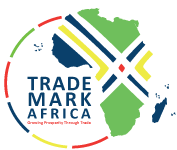In a world looking increasingly inwards, Africa will need to make its own opportunities, writes Kingsley Makhubela.
Changes in the global landscape require emerging markets to consider how they must shape their future. Many countries in the developed world have focused their efforts and resources inwards as a result of challenging economic times.
There is a danger that a shift away from emerging markets will negatively affect the global economy’s ability to grow.
This would not bode well for Africa, given its growing integration into the global economy in recent years.
To mitigate this, Africa must take steps to secure its own share of global economic growth and African citizens must sustain the economic growth of the continent.
The greatest opportunity to realise its growth potential is often overlooked — Africa’s ability to trade and do business with itself. What is required is an inward and outward strategy acting in tandem — outwardly cementing Africa’s place in the global economy through foreign investment and improved trading links while internally driving the integration of regional trade.
It is no coincidence that Africa’s recent growth, epitomised by the label “Africa rising”, was in part realised due to increased levels of foreign direct investment. Improvements in fiscal policies, governance and regulatory frameworks, along with a move to diversify away from commodities, presented greater opportunities to investors.
If Africa is going to capitalise on this base, it needs to collaborate on a shared future. Africa’s development must be underpinned by further regional integration and trade liberalisation. While the rest of the world becomes increasingly fractured and disparate, it is time for Africa to create ways to better integrate its fragmented markets, which have long constrained growth and provided barriers to trade.
World Bank statistics put intra-African trade at just 11% of the continent’s total trade between 2007 and 2011. In 2015, intra-African trade was worth just $170m, according to World Bank figures. The potential trade is worth trillions of dollars.
To collectively succeed, individual governments must work towards a regional imperative if Africa’s economies are to be affected in a way that drives sustainable and inclusive growth for the continent.
These regional trading corridors cannot work in isolation but must be scalable to improve connectivity across the African continent.
This approach has been championed by such initiatives as the African Union’s Continental Free Trade Area. The UN Conference on Trade and Development estimates its implementation will nearly double intra-African trade by early next decade.
There are positive results from some regional trading corridors such as the Southern African Development Community, the Economic Community of West African States and the East African Community, but for Africa to be greater than the sum of its parts, regions must learn to work together.
This includes harmonising development and economic policies, regulation, market structure and governance, and their implementation.
Any regional initiative will need to be accompanied by huge investments in cross-border infrastructure.
The African Development Bank estimates the continent would need to spend an additional $40bn a year on infrastructure to turn around its current deficits and keep pace with economic growth.
“A customer base of nearly a billion people provides the opportunity for regional opportunities and access to the broader African market if the continent’s industrial development plans can serve to improve productivity capacity.”
The rising trend of urbanisation is putting pressure on an already inadequate infrastructure and demonstrates the urgent need for greater investment if living standards for Africa’s growing population are to rise. Conversely, the benefit of Africa’s growing population could help facilitate regional trade growth.
A customer base of nearly a billion people provides the opportunity for regional opportunities and access to the broader African market if the continent’s industrial development plans can serve to improve productivity capacity.
If Africa expects the rest of the world to show faith in the African growth story, then Africans must demonstrate their own commitment.
A collaborative approach to Africa’s growth story driven by the continent will make it a stronger contender globally.
SA is in the unique position of holding membership to several multilateral fora. As SA takes over the Brics (Brazil, Russia, India, China and SA) presidency for 2018, and as the only permanent African member of the Group of 20, it is the country’s responsibility to champion the case for Africa and its agenda by being at the nexus of discussions with its international counterparts.
The continent’s significance to SA’s economic future cannot be underestimated.
SA can reap the rewards of Africa’s tandem approach to growth. Its track record in doing international business makes it a natural access point and springboard into Africa for the rest of the world.
But SA must have a clear strategy in its approach to Africa to ensure it also becomes part of the continent’s growth story. SA must continue to cultivate its role in facilitating positive effects for Africa as this is where its own long-term economic success should lie.
Source: Business Day
Disclaimer: The views and opinions expressed in this article are those of the authors and do not necessarily reflect the official policy or position of TradeMark Africa.















